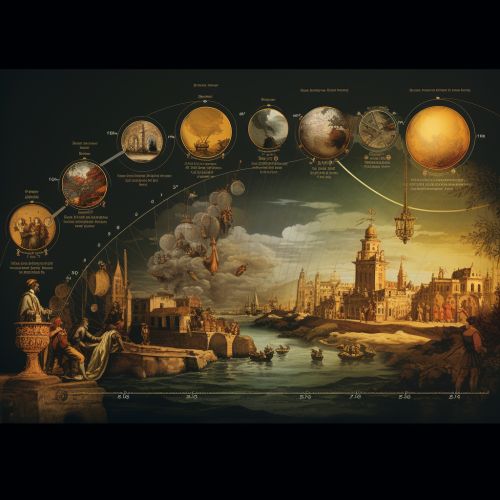Mathematical Physics
Introduction
Mathematical physics refers to the development of mathematical methods and their applications to physics. It is a branch of applied mathematics, but deals with physical problems. Mathematical physics seeks to apply rigorous mathematical ideas to problems in physics, and to formulate physical theories in a mathematically precise way.
History
The history of mathematical physics dates back to the ancient times. The earliest mathematical approaches to physical phenomena were developed by the Greeks, particularly by Euclid and Archimedes. In the 17th century, Newton and Leibniz independently developed the foundations of calculus, which has profound implications for the development of physics.


Mathematical Methods in Physics
Mathematical methods used in physics include differential equations, group theory, and manifold theory. These tools allow physicists to formulate physical laws in a precise manner and provide a framework for testing the validity of these laws.
Differential Equations
Differential equations play a significant role in physics. They are used to describe physical phenomena such as heat conduction, wave propagation, and quantum mechanics. The solutions to these equations often provide valuable insights into the behavior of physical systems.
Group Theory
Group theory is a mathematical method that studies the algebraic structures known as groups. In physics, it is used to study symmetries, which are fundamental to many physical laws.
Manifold Theory
Manifold theory, or topology, is used in physics to describe spaces that might be curved or otherwise not flat. It is fundamental in the study of general relativity, which describes the nature of gravity.
Applications of Mathematical Physics
Mathematical physics has found applications in many areas of physics including quantum mechanics, general relativity, and statistical mechanics.
Quantum Mechanics
Quantum mechanics is a fundamental theory in physics that provides a description of the physical properties of nature at the scale of atoms and subatomic particles. Mathematical physics plays a crucial role in formulating the principles of quantum mechanics and in solving quantum mechanical problems.
General Relativity
General relativity is a theory of gravitation that was developed by Einstein. It describes gravity not as a force, but as a consequence of the curvature of spacetime caused by mass and energy. Mathematical physics is instrumental in the formulation and understanding of general relativity.
Statistical Mechanics
Statistical mechanics is a branch of physics that uses probability theory to study the behavior of a mechanical system where the state of the system is uncertain. Mathematical physics provides the tools necessary to analyze these systems.
Future Directions
The future of mathematical physics is promising, with many open problems awaiting solutions. Some of these problems include the unification of quantum mechanics and general relativity into a single theory, the nature of dark matter and dark energy, and the behavior of matter at extreme conditions.


